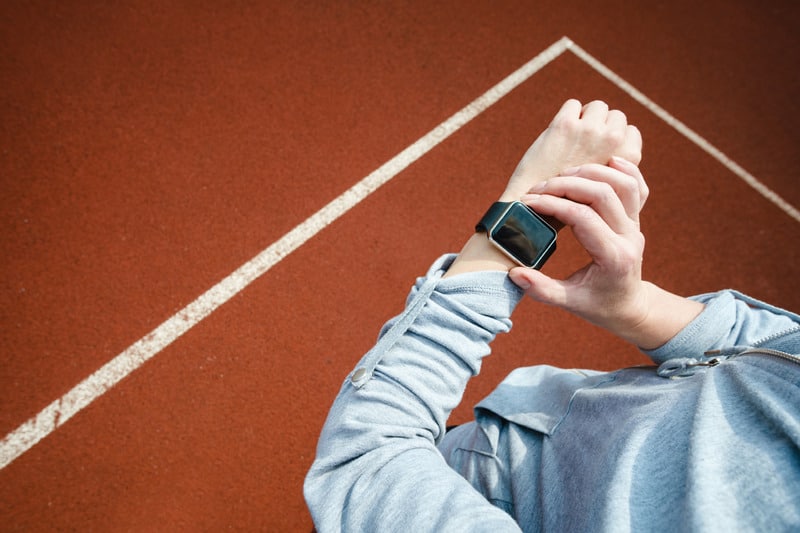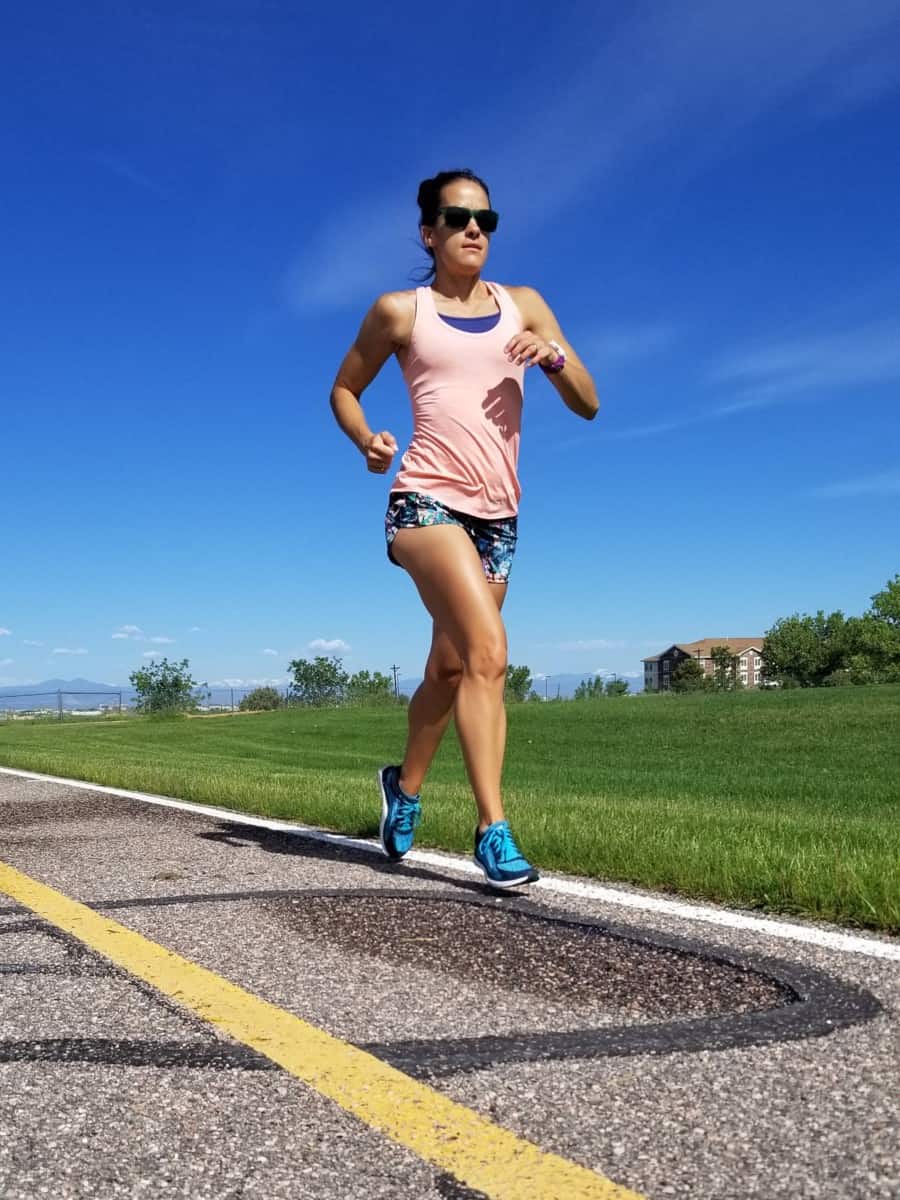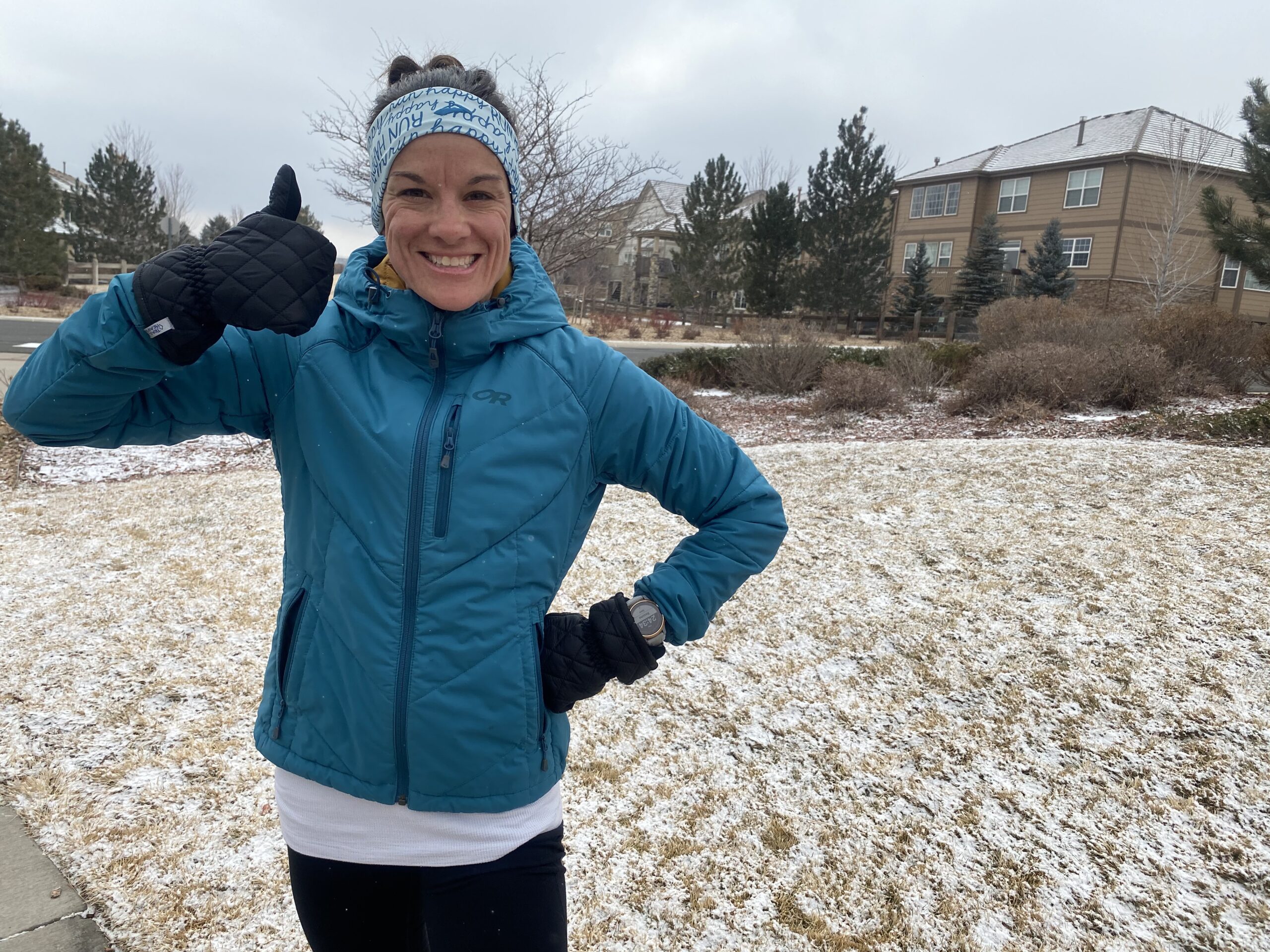When you begin a new training cycle, it’s common for a coach to ask you to complete a time trial. No matter what distance of race you’re training for, these running time trials give both you and your coach valuable information. This type of time trial is not intended as a dress rehearsal for your goal race because they will be much shorter in length. Instead, think of the running time trial as a dipstick of your current fitness level. Don’t have a coach? Here we’ll tell you why you’ll want to do one anyway, and how to go about executing your best pace for the time trial.
What is a Running Time Trial?
I’ve been back in the marathon game for a few years now, but this is the first marathon cycle where I’ve had a coach.
I was not at all surprised to see a time trial in my schedule during the second week because I’ve heard coaches talk about their importance during podcasts. Which is why I ended up doing one on my own during my last training cycle. (Well, it wasn’t exactly on my own – I roped my husband into it, too.) Anyway, I knew they had a lot of value which I’ll go over.
So, what is a time trial?
If you’re thinking “Oh yeah, like the Olympic Time Trials!” No, it’s not that. It’s not something you do to see if you get on a place on the team. Well, at least not in this case. It’s a short distance, usually between a mile and a 5k, to help figure out how fit (running-wise) you are at a given moment.
These are fast efforts that tap into your anaerobic system. But you also have to be conscientious of how fast you’re going at the beginning so you don’t run out of steam way before you get to the finish line. The goal of these is to demonstrate your potential that can then be used as a baseline to see how you might do at various distances. Oh, and did I mention, if you do it right, you should feel very uncomfortable in that last quarter mile!
The Purpose of the Running Time Trial
Implementing time trials into your training is a valuable component. I recommend doing one at the beginning of a training cycle and then another one towards the middle.
Completing one within the first few weeks of a new training cycle will give you insight into your current level of fitness. Now, I know this can be a scary thing!
What if the results are less than what you expected? That can be disheartening. But, you can’t let it discourage you. Think of it as useful information that you can use to complete a successful training cycle and utilize to improve your running. In order to set realistic, attainable goals to work toward, having a baseline to work from is necessary.
Ever heard the terms “easy pace” or “half marathon goal pace (HGMP)” and thought, “I don’t even know what those paces are for me!” This time trial is going to help you figure that out, which we’ll go over.
Additionally, revisiting the same place you performed your time trial and doing another one mid-season will help you assess your progress toward your goal as well as adjust training as necessary.
Not to mention you’ll get a great quality workout which is necessary to building those fast-twitch muscles. This will double as your speed work for the week.

How to Execute your Time Trial to Do Your Best
Step 1: Find a flat place to run.
Preferably, your time trial would be performed on a track. If constraints keep you from being able to do one on a track, try to find a flat loop. If you have any small lakes in your area, trails around these are often flat and can be a great back-up to complete your time trial. Try to choose a place that you can come back to when you’re ready to complete another time trial again in the future.
If you choose not to do this on a track, you’ll need an accurate way to track your mileage. With capabilities on our phones these days, you’re probably thinking this is easily done with an app, etc. But I caution you against this. The GPS tracking of these apps is not quite accurate – and when you’re trying to gauge your speed with a 2-mile time trial, you need your time to be correct. This article explains why utilizing a watch specifically designed for running is what you’ll need if you don’t have mileage markers or something else.
I can’t recommend Garmin enough for this! I’ve run with people who have used their phone app or Apple watch and the Garmin always comes through.
Step 2: Complete your warm-up.
DO NOT run your time trial without warming up first. That would definitely be a recipe for injury. A bit of dynamic stretching with 15 – 20 minutes of easy-paced running (I like to mix in a little walking, too) will get your body ready to do its thing.
This would also be a good time to double-check that your watch is set to auto lap when you want it to. Meaning that it will record your time/pace for that lap and also beep at you. I like mine to auto lap every 1/4 mile. This makes it so I’m not constantly looking at my watch to see my pace while still giving me accurate information within my run to know if I need to back off or pick up the pace. Some people prefer to run more by feel in which case maybe you only want to check your watch once halfway through.
Step 3: Get ready to run fast.
This is not quite a redline, all-out effort that you would do if you were racing, but it will be close. You’ll likely do a time trial on your own, which is a very different atmosphere than if you were competing against other people. This time, you’re just competing against yourself. Once you’ve warmed up, put your game face on…it’s go time.
Step 4: Conservative start, then throw down the hammer.
For the most part, you’ll want to keep a pretty even pace throughout your time trial, but you don’t want to go out too fast either. If you’re doing a 2-mile time trial, for example, completing your first 1/2 mile at around your 5k pace would be a smart choice. Then you can start picking up the pace from there (assuming you feel good and can.) Once you’ve hit 1.5 miles, it’s time to bring it home. Don’t save it all for the last quarter mile, or you might have too much left in the tank – which won’t give you an accurate picture of what you’re capable of. Finish hard. You should be out of breath at the end.
Step 5: Cool down.
You just completed a high-quality, hard effort run. Walking straight to your car immediately after you complete your time trial isn’t smart. Cooling down with a 15-20 minute jog will help your body fight off fatigue caused by lactic acid build-up during your run and begin the necessary recovery process required after a tough workout. Plus, mileage matters as discussed here, and this is a great time to get in a couple more easy ones.
Step 6: Analyze Your Results.
Doing nothing with your results will have missed the point. Sure, you’ll still have gotten a great workout, but a time trial serves a greater purpose. Digging into your results can really help you in your training going forward.
Utilizing Your Time Trial Results
So, now that you have your time trial result you’re probably wondering what to do with that information.
As mentioned, this will be a helpful guide to determine training paces for different types of runs you’ll do. But digging into the run itself can also be helpful.
Interpreting Your Splits and How You Felt
It’s important to remember that…
1) this is just one data point, and
2) it wasn’t actually a race.
If you are left feeling like you thought you could’ve done a bit better, in a race environment, you likely would have. It’s also important to use it as a guide and not let it define you as a runner and where you’re headed. Same is true if you have a great time trial! Doing well in your time trial is a testament to the fitness and endurance that you’ve developed, but you also have to keep putting in the work and showing up to make it count come race day.
Not sure if your time is “good” or “bad” for you? Then it’s neither and it is what it is. A true data point for your capabilities as a runner that you can now utilize to set paces and goals for the rest of your training block.
Take time to also think about how you felt while you were running and if you went out too fast or, conversely, realized you could have gone harder at the end. Reflecting on this will help you with pacing as you race in the future and modify your goals. This is where the results-driven goal-setting takes place.
So, now for the really good stuff – how that time trial result will set your training cycle up for success.
Using your Finish Time to Plan Training Paces
Now that your time trial is over (and if you’re like me you’re glad it is…I much prefer endurance running after all!) it’s time to put those results to good use.
You’re going to want to this link right here: Mcmillan Calculator
You might be wondering who this “McMillan” fella is and why you should trust him. He is a widely known coach in the running world and is the author of, “You, Only Faster.” In an interview with Strava, he discussed how he utilized the connection between exercise science and real-world training advice (clearly, he’s very smart) to develop the calculator. And it.is.genius. It is crazy how closely accurate it can predict your marathon time from just a 2-mile time trial (as long as you train correctly…we know the marathon can be a beast!)
When my husband looked at this a few years ago, we basically laughed at the times it said we could run marathons in. But when I actually did run my marathon several months later, I wasn’t too far off the mark! I finally realized I could possibly qualify for Boston and maybe just hadn’t been working to my potential in longer distances.
Ok, so here’s the nitty-gritty on how it works.

I just ran a 2-mile time trial prescribed by my new coach. He asked my team to do this for the exact reasons I’m going over here.
- I’ll put my time (13:44) into the calculator on Mcmillan Running. You can also input a goal time that you have for yourself (but you don’t have to) – there are lots of different choices of races. I used my 3:35 goal for the marathon.
- Then click “Calculate My Paces.” Once there you’ll see two columns – one shows what your current fitness will allow you to do in different races and the other one shows equivalent race times for whatever your goal is. My 2-mile time trial is not quite where I’d want it to be for that 3:35, but it’s close…and attainable.
- Next up, and mostly what I’ve discussed here in terms of setting up your training is found under “Calculate My Paces.’
So these are actually based off your goal time if you put one in. And that’s completely fine if your goal time is fairly close to your current fitness level in a shorter race. If it’s way off, however, I would suggest erring on the side of the slower end of some of those paces. It could also be wise to just put your current time into the “goal” section and see what paces pop up. A combination of the two might be your best bet.
Just be really careful on those easy days where your focus is endurance…you don’t want to overtrain and go harder than your body is ready for.
MORE: How to Prevent Injury in Marathon Training
An example of a workout you might use this paces calculator for could be Yasso 800s. The calculator will tell you what pace to strive for. Additionally, on that first page you can see what you might be capable of for a half marathon for example, so if my coach tells me to do part of my run at “half marathon goal pace” I don’t feel like I’m just reaching into thin air for a pace.
McMillan is my favorite running calculator. I trust it and it has worked well for me. But it’s only one formula, and there are others. You might like looking into this one from Chicago Endurance Sports or Jack Daniel’s VDOT.
Whatever you choose, get a baseline…and then get to work on that training!







